Once upon a time, there was a magical land nestled in the north-east of Fantasyland. This miniature kingdom, Le Pays des Contes de Fées, had an appeal that far exceeded its small size. As guests glide along the tranquil waters of the canal, they encounter a world of the stories and legends that inspired the Walt Disney Animation Studios throughout its history. But the legacy of this must-see attraction goes back even further, all the way to Walt Disney himself…
LARGE-SCALE MINIATURES
At the root of Le Pays des Contes de Fées lies Walt Disney’s passion for miniatures. Since his childhood, he was fascinated by fairytales and other fantasy stories such as ‘Jack and the Beanstalk’, ‘Alice in Wonderland’ and ‘Gulliver’s Travels’. He particularly enjoyed seeing characters in disproportionately large environments, and this was evident early on in his work.
It is said that his first experience of scale models dates back to the early 1930s, when he helped his nephew – a certain Roy E. Disney – to build his electric train, but it was in 1939 that he really developed a passion for these tiny objects, discovering the impressive collection of Narcissa Thorne, an American artist famous for her 1/12 scale recreations of American, European and Asian interiors, at the Golden Gate International Exhibition which opened in San Francisco that year.
He began to collect all sorts of miniatures, acquired in particular during his travels throughout Europe, including furniture, tableware, books and musical instruments. He even tried his hand at building scale models, which proved quite successful. He started out with simple objects and worked his way up from there.
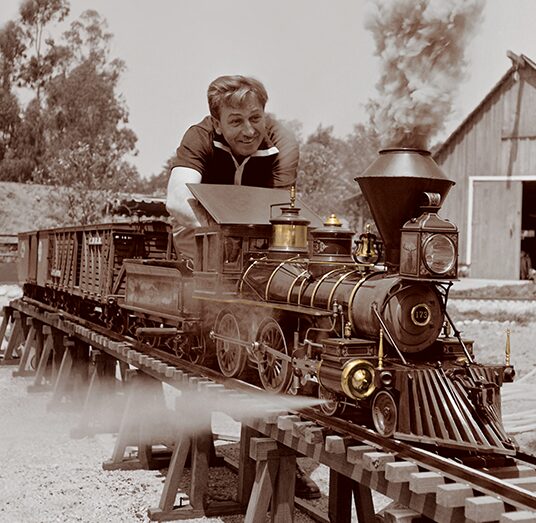
Between 1949 and 1950, he and his colleagues from the studio created the Carolwood Pacific, a train and railway track in the garden of his Holmby Hills estate. He then set about building a model of Granny Kincaid’s cabin, the grandmother of little Jeremiah in So Dear To My Heart (1948), which was exhibited at the Pan Pacific Auditorium in Los Angeles in 1952 and presented to the public as the first stage of a larger project called Disneylandia – a series of dioramas representing key moments in American history, to be transported by train from city to city across the United States.
During this period, he also worked on two other projects: a miniature animated dancer and a stage representing a traditional barbershop quartet.
But an even more ambitious idea would soon dominate his thoughts…
IT’S A SMALL WORLD
This idea was to create a theme park. It had been on his mind ever since he discovered Electric Park in Kansas City in 1911, and he began to develop the idea in 1948 under the name ‘Mickey Mouse Park’. In 1951, he asked one of his artists, Harper Goff, to draw the now famous aerial view. It was here that the first mention was made of an area known as the ‘Gravity Flow Canal Boat’, a boat trip located not far from an old mill …
This concept evolved in 1953 with a plan drawn up by Herb Ryman, one of the pioneers of Disneyland, including a ‘Lilliputian Land’ – a new reference to Jonathan Swift – located between ‘Fantasyland’ and ‘Tomorrowland’. In Walt’s own words, this Land was to be ‘A land of Little Things…a miniature Americana village inhabited by mechanical people nine inches high who sing and dance and talk to you as you peek through the windows of their tiny shops and homes. In Lilliputian Land, there is an Erie Canal barge that takes you through the famous canals of the world, where you visit the scenic wonders of the world in miniature.’
The idea of depicting these ‘wonders of the world in miniature’ was inspired by Walt’s visit in 1952 to the Dutch park Madurodam, which had just opened its doors at the time, and which still houses 1:25 scale replicas of the Netherlands’ most famous landmarks and monuments.
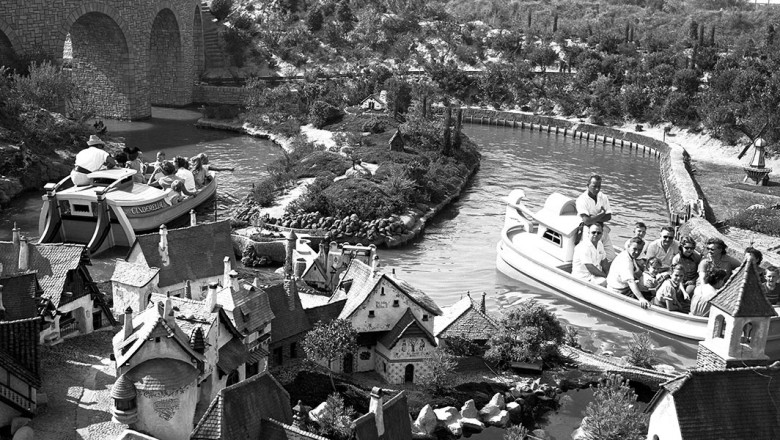
The technology needed to animate these characters had not yet been perfected when Disneyland Resort opened in 1955, so the Imagineers decided to open a temporary attraction, Canal Boats of the World, offering a peaceful glimpse of Fantasyland from barges named after iconic figures from world culture such as Nelly Bly, the pioneering American journalist who sailed around the world alone between 1889 and 1890, Guinevere and Lady Shallot, from the Arthurian legends, and Gretel, from the Brothers Grimm.
The following year, Walt returned to the idea of a boat trip through miniature scenes, but this time focusing on his own animated classics. To achieve this, he called on Imagineers who had previously worked in his animation studio, such as Ken Anderson, who had taken part in the creation of several ‘Silly Symphonies’, Snow White and the Seven Dwarfs(1937) and Pinocchio (1940), and Frank Armitage, who had been a member of the team on Peter Pan (1953), Lady and the Tramp (1955) and Sleeping Beauty (1959) – and who would also contribute to the design of Fantasyland for Disneyland Paris! This new version was unveiled in 1956. The miniatures on display pay homage to the classic films Snow White and the Seven Dwarfs, Pinocchio, The Adventures of Ichabod and Mr. Toad (1949), Cinderella (1950), Alice in Wonderland (1951) and Peter Pan, as well as famous cartoons such as The Three Little Pigs (1933) and The Old Mill(1937).
The design of the various scenes shows such a perfect blend of animation and architecture that the Imagineers in charge of renovating Fantasyland in 1983 decided to draw inspiration from it to reimagine the whole Land. For example, Toad Hall, which was part of the original miniature version of the attraction, now serves as a new life-size setting for Mr.Toad’s Wild Ride.
Meanwhile, the journey of the Storybook Land Canal Boats continues to evolve, with the addition of new scenes inspired by Aladdin (1992) and Frozen (2013).

SETTING SAIL FOR EUROPE … AND BEYOND!
At Disneyland Paris, the creation of Pays des Contes de Fées was planned as early as 1992, as part of the first major extension to Disneyland Park. The original concept was similar to that of the Disneyland Resort, but with a few new twists. The first sketches showcased Beauty and the Beast, released in France in October of that same year, through the Beast’s castle and Belle’s village. The Little Mermaid (1989) was also included, and it proved to be the perfect opportunity to pay tribute to Aladdin, released in 1992 in the United States and in France the following year, by replacing the enormous Monstro figure that greets guests at the entrance to the American attraction with the tiger’s head from the Cave of Wonders.
The attraction, which opened in 1994, also recaptures Walt’s original idea of playing with scale in a highly imaginative manner. The entrance sequence, with its giant book representing Happy Valley from Fun & Fancy Free (1947) and its plants evoking a patchwork quilt (as can also be seen in California, in homage to the ‘Silly Symphony’ Lullaby Land from 1933), gives guests the impression of falling back into childhood, as if reading a story before going to sleep.
The other special feature of this version is the organisation of the scenes, which echoes that of Fantasyland (set out in areas dedicated to each European country), while extending it to the tales and stories from all over the world that inspired Walt Disney Animation Studios. This choice also recalls Walt’s original project involving a miniature cruise around the world.
The boats that sail these peaceful canals bear the names of female Disney characters, such as Wendy, Jasmine, Pocahontas, Aurora and Mary Poppins.
Just like the original ride in California, the Paris attraction has evolved over time – opening without any characters (as is still the case today in the United States), before later becoming populated with iconic figures for each scene.
In 2010, Rapunzel’s tower was modified to reflect the exact design of the tower in the animated film Tangled released the same year.

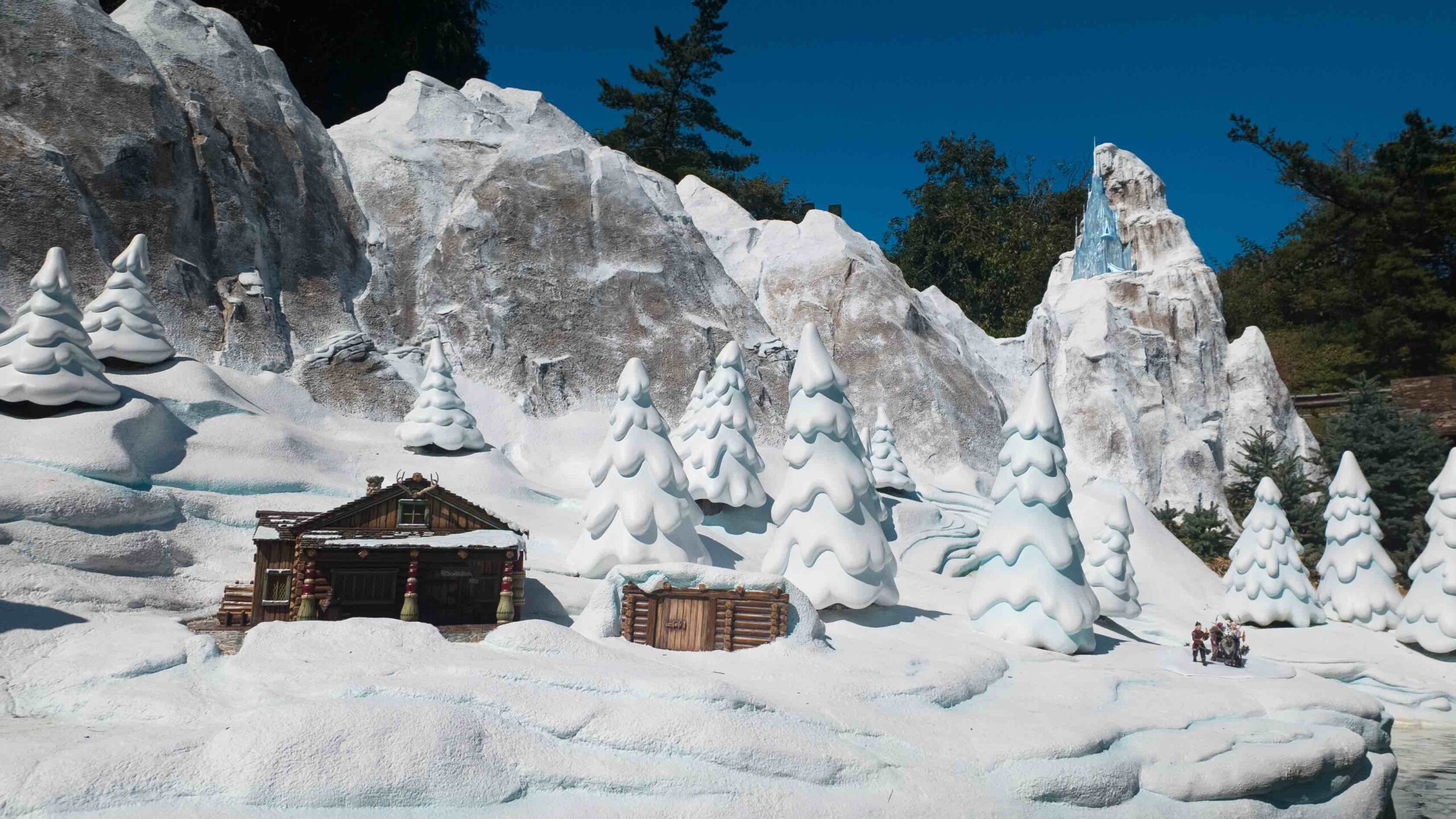
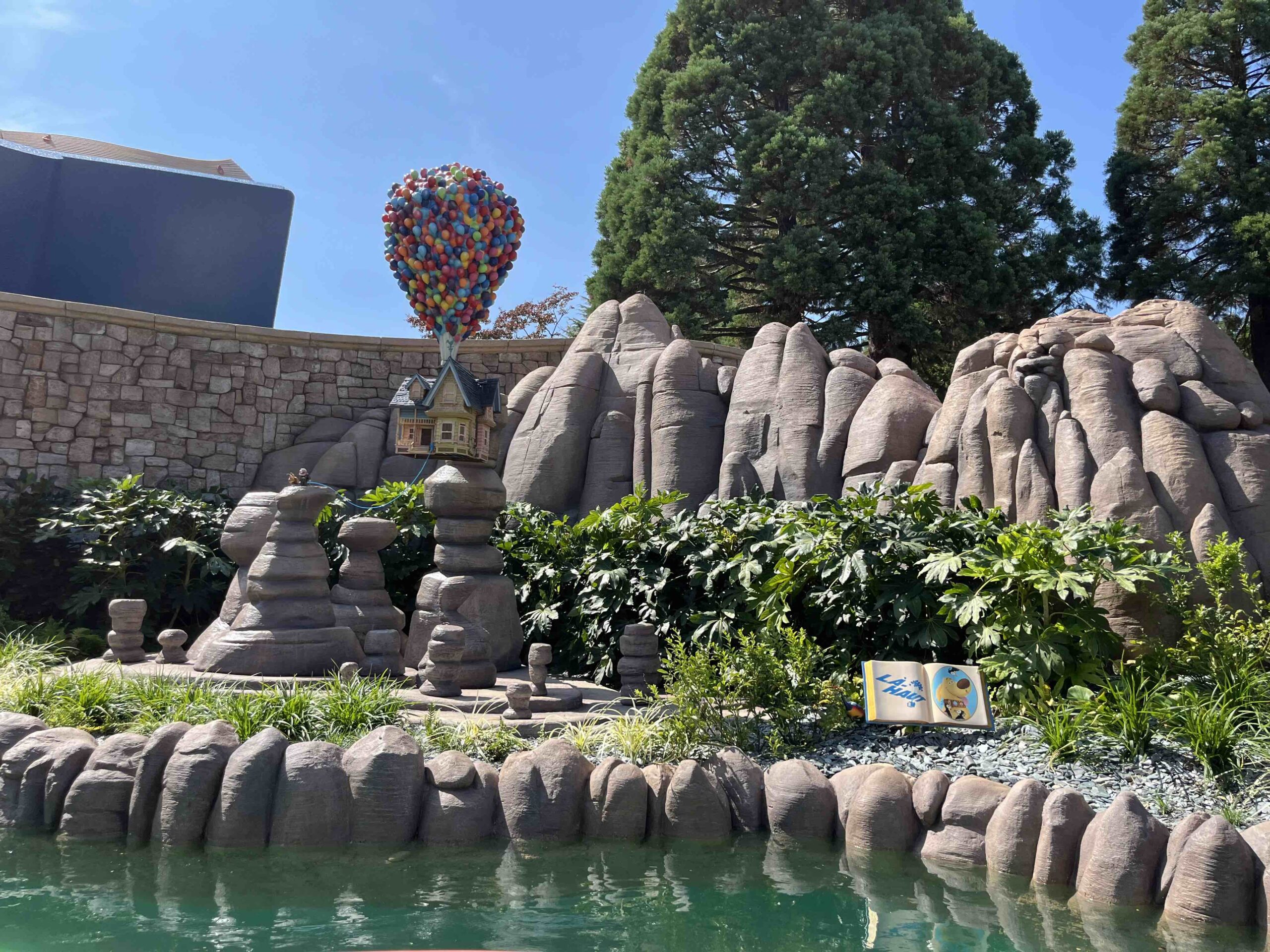
This year, to mark the attraction’s 30th anniversary, three new scenes have been added, inspired by the Disney animated films Frozen, Winnie the Pooh, and the Pixar animated film Up.
During their peaceful boat ride, guests can now admire a number of new scenes, including majestic North Mountain overlooked by Elsa’s iconic Ice Palace, Winnie the Pooh’s treehouse and Carl Fredricksen’s house flying above Paradise Falls, which serves as the final scene. This final scene feels like a parting invitation to travel – although the ride is ending, it’s just the start of the adventure.
And as Charles F. Muntz rightly said, ‘Adventure is out there!’

